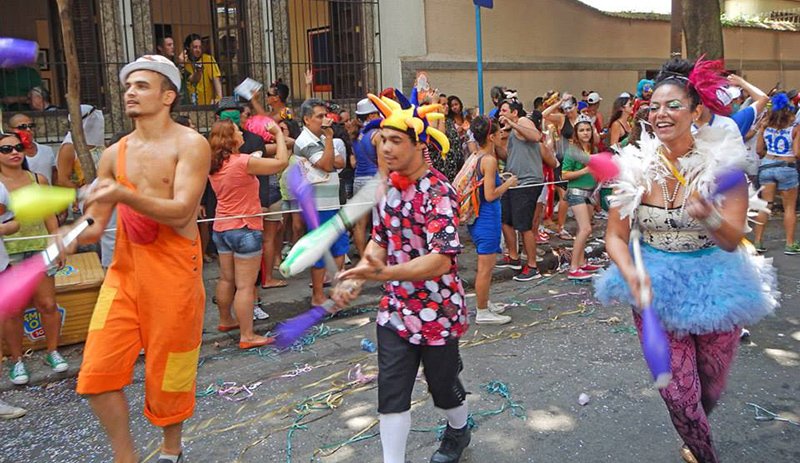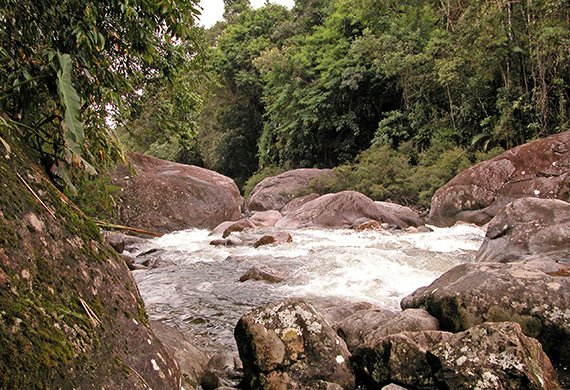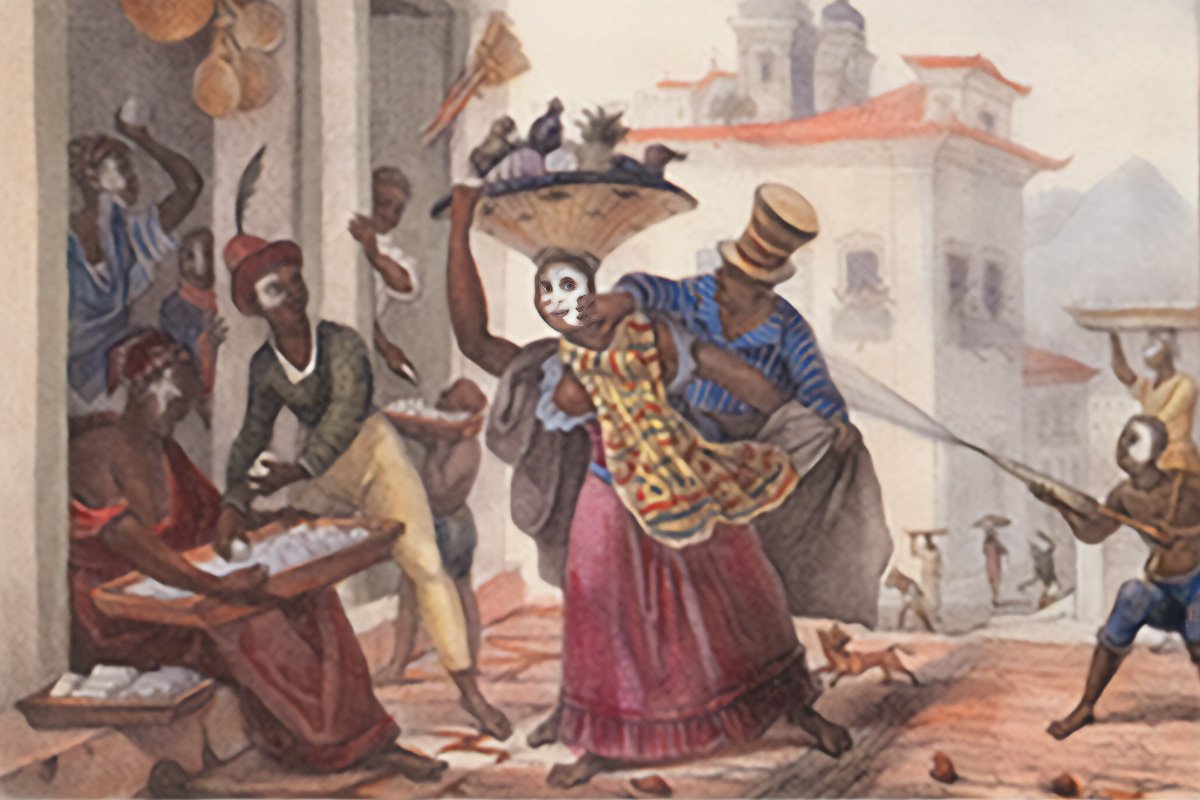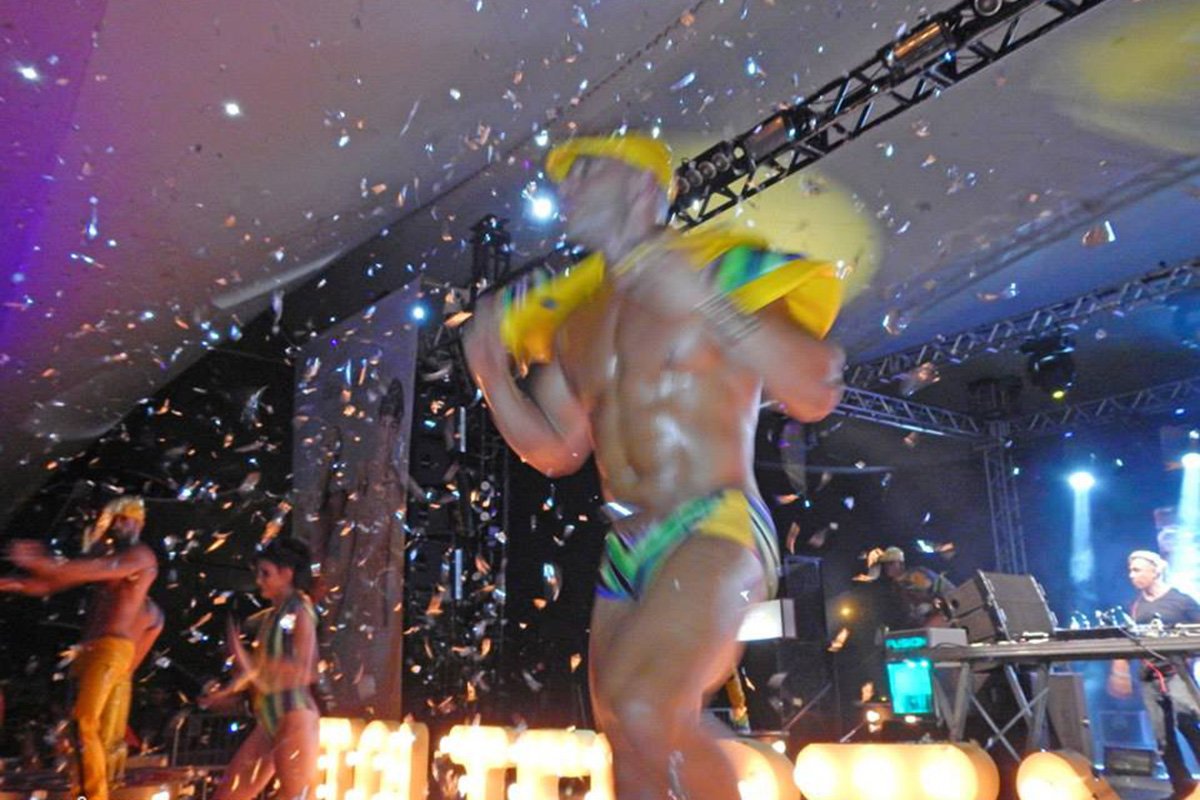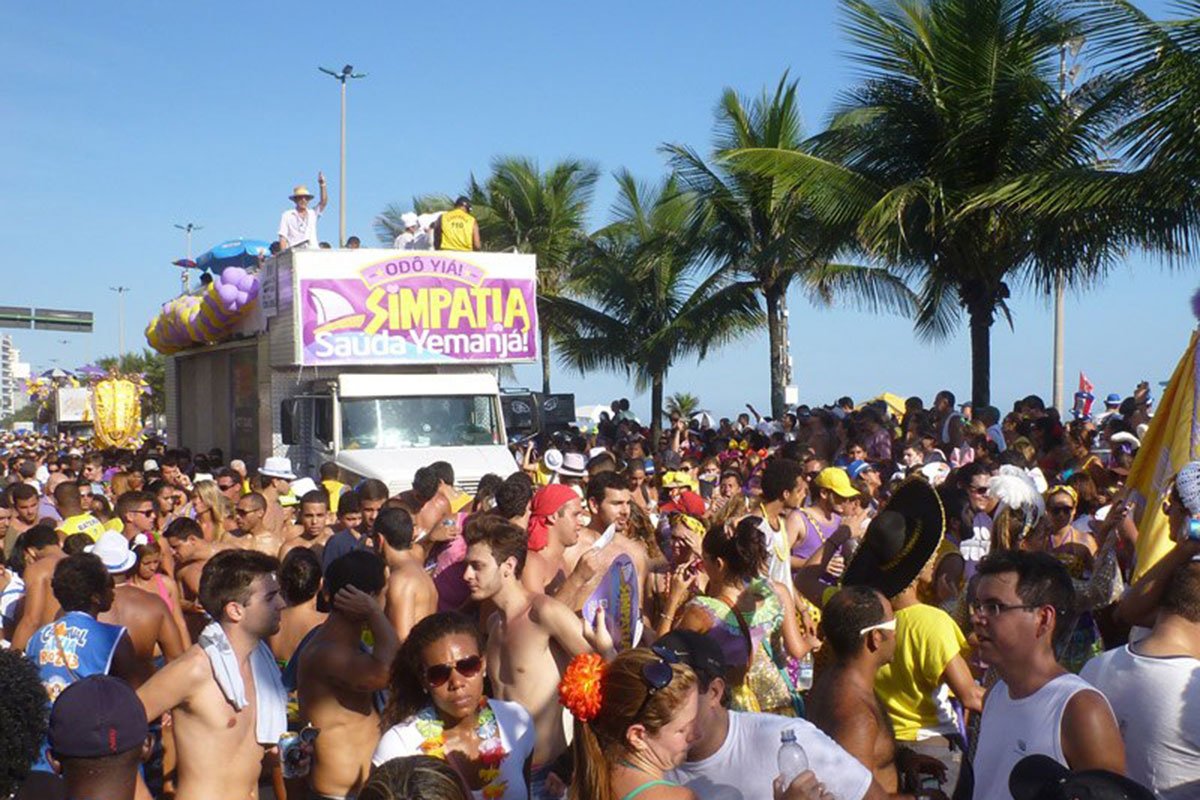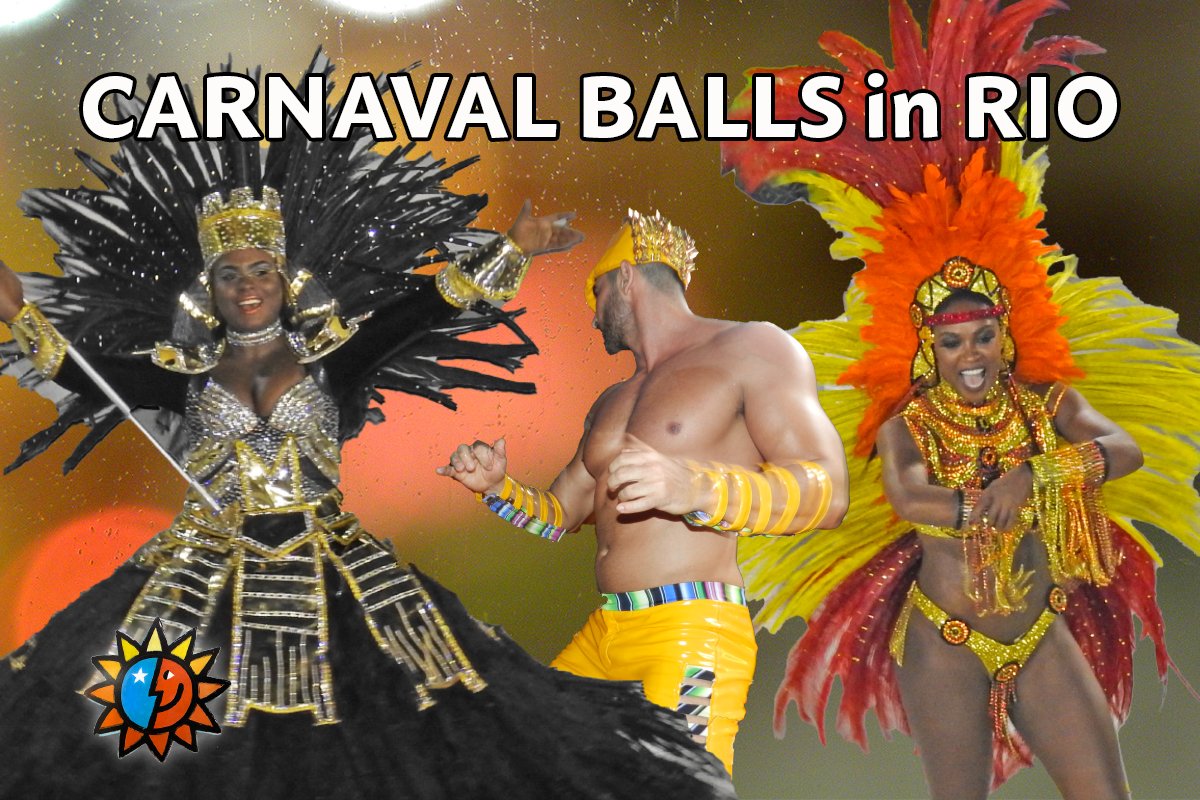
Carnaval Balls in Rio de Janeiro
In addition to the Samba Parade and all the fun in the streets, Rio offers a selection of Carnival balls that you really should not miss. You won't have to spend a fortune to have a great time. Tickets to most balls are pretty affordable. If you are coming with a group, you may reserve a table or a box.
Carnaval balls in Rio have a tradition of live music, and percussion bands from Samba Schools often participate. The traditional soundtrack includes marchinhas, sambas, frevos, and other Brazilian beats. Many prominent Blocos promote balls, sometimes with a guest vocalist or group. They are very popular and help fund the costs of free street events.
There are also many Carnaval parties with dance music, where local and international DJs play their latest sets. If you have an issue with people wearing costumes or samba, they may be your best bet.

If you want information about this year's events, our Carnaval Party Planner is a good first stop. We select the best events and list them neatly by dates, from Pre-Carnaval to the Champions Parade.
This page is more dedicated to the history and curiosities of Carnaval Balls in Rio de Janeiro, from the colonial period to the present day. We have noticed that some websites use our original content as a reference, so we try to keep up.

Carnaval Balls in Colonial Rio
The first big Carnaval ball in Rio happened in 1846 when they were also popular in Europe. It was promoted by the Italian wife of the owner of a hotel. Clara Delmastro missed the glamour of the Venetian Balls. Over 1,000 people showed up at the party, held at Teatro São Januário. Luxury costumes or black ties, as in the paintings from the 19th century.
It was a way for aristocrats to celebrate in a protected environment. Ordinary people participated in Entrudo, where squirting water on other people was the idea (see history).
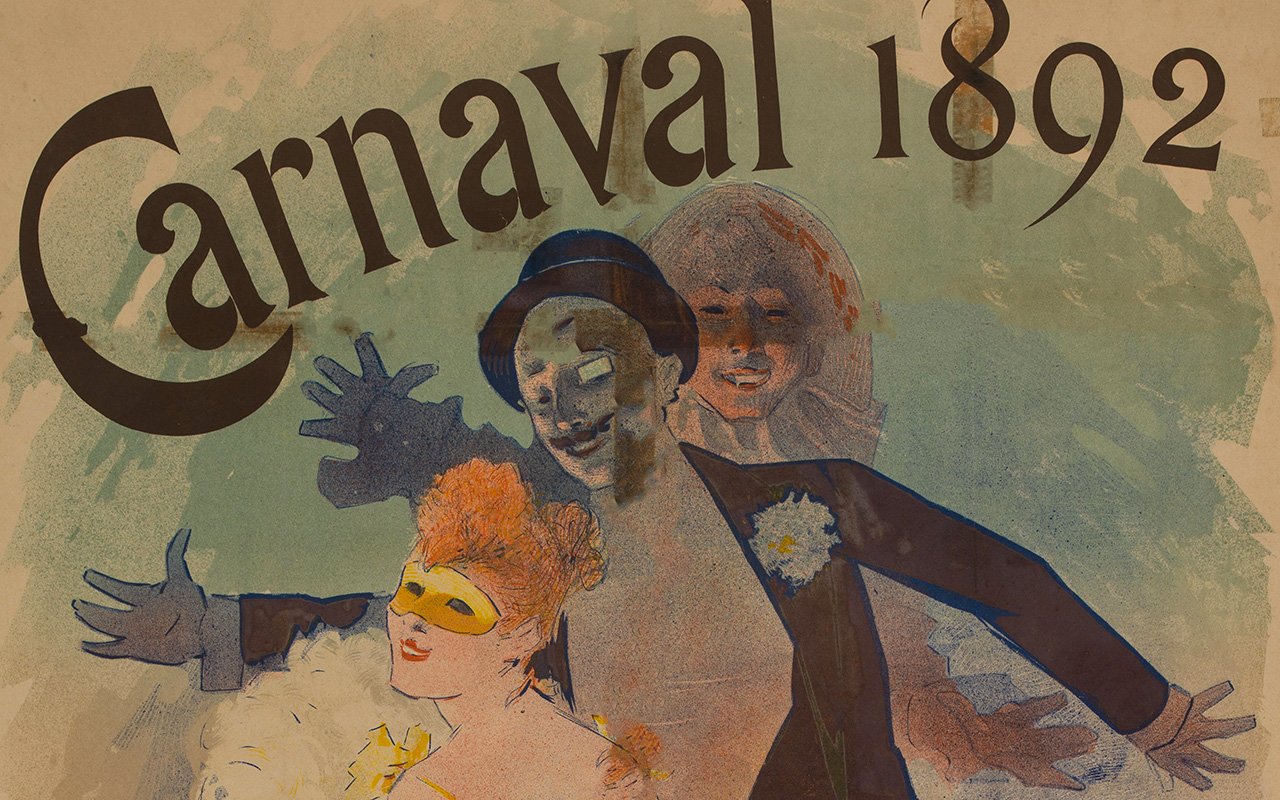
Carnaval Balls in the 1920s
Jumping to the Roaring Twenties, the luxury hotel Copacabana Palace opened its doors in 1924. It was built in the tradition of grand hotels of the French Riviera. The palace brought glamour and international attention to Rio, and its Carnaval balls stayed in history.
Jorginho Guinle, the owner's "playboy" son, had close connections to old Hollywood. He invited, among others, Dolores Del Rio, Katharine Hepburn, Lana Turner, and Marlene Dietrich. Jorginho Guinle hosted fabulous Carnaval Balls until 1973!
Another ball that became an institution was the Official City Gala Ball at the historic Theatro Municipal. The first edition, held in 1932, had 4,000 patrons, including then–President Getúlio Vargas. The balls continued until 1975 when experts concluded that all the thumping was damaging the structures of the historic palace.

Carnaval Balls in the 70s & 80s
While luxury balls continued to happen at the Copacabana Palace and Hotel Glória, the cultural changes in the seventies also changed how people partied. The Yacht Club came up with the first Carnaval pool party.
There were fabulous balls at Clube Sírio e Libanês, Monte Líbano, and Canecão. People were free, scantily clad, on a different vibe. Photos of these events, which included local celebrities, were published in glossy magazines that sold like hotcakes.
In the 1980s, balls became even wilder. Everybody remembers the legendary parties that Guilherme Araújo promoted at Morro da Urca. There was live music with the best Carnaval songs, performers, and special guests. There were indoor and outdoor spaces, beautiful people from around the world, and a view that wouldn't quit.
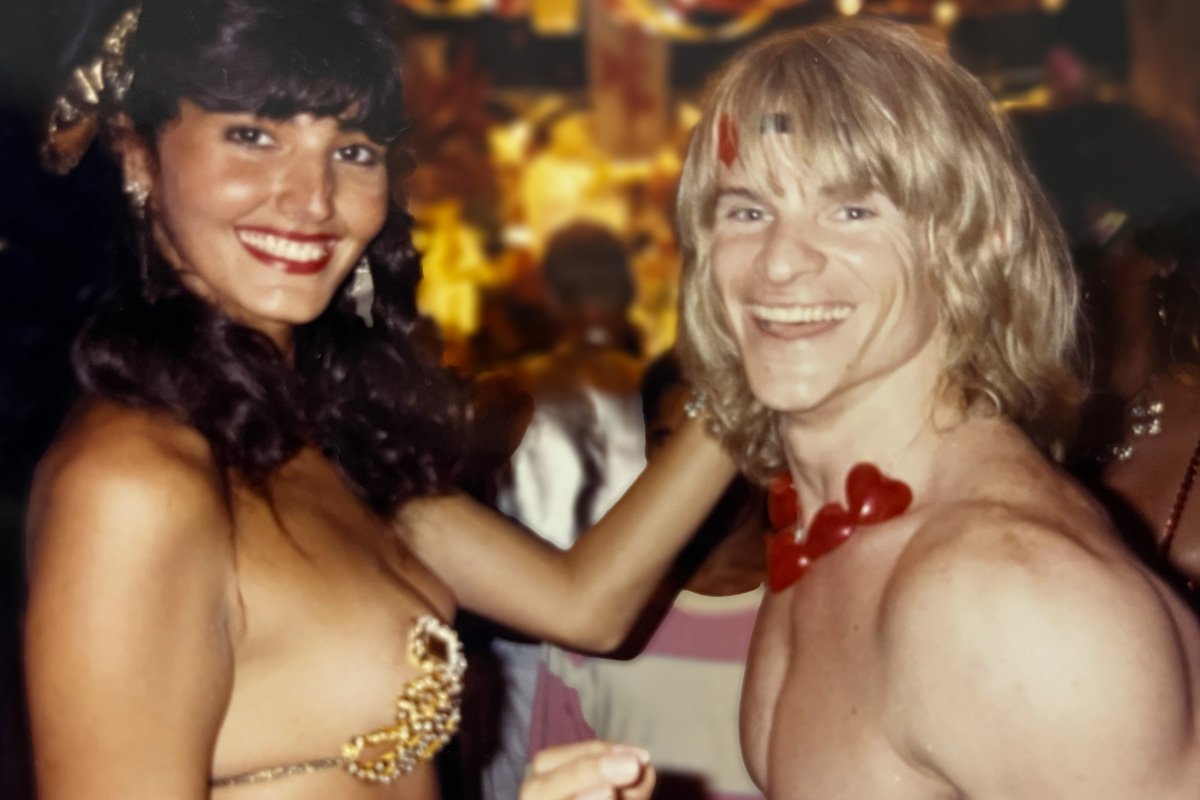
Cross-dressing has always been part of Carnaval. Baile dos Enxutos was the pioneer. Gala Gay eventually became the main event on Carnaval Tuesday. First at Canecão, and later at Club Scala. Drag queens in luxury costumes, local and international celebrities, and curious people—it was a fabulous mix.
Reporters from magazines' O Cruzeiro' and 'Manchete' were always there to capture images for their Carnaval editions. Eventually, the entrance was broadcast live on open TV, and it was a riot!
Carnaval parties with world-famous DJs playing their sets started in the 90s. They have evolved, and now they are one of the big attractions. It is considered an honor to be invited to spin at a major party - some cater to thousands of people. It's the off-Carnaval circuit.

Where’s the party?
The best contemporary Carnaval balls are powered by the most popular Blocos. Each has a loyal following, and patrons attend street events and balls. The Jockey Club, Circo Voador, Fundição Progresso, and other large clubs feature different parties every night. Other spaces pop up in Centro, Flamengo Park, and Marina da Glória. It's hard to keep up.
We hand-pick favorite Carnaval balls, parties, and other events every year. They are neatly listed in our Carnaval Party Planner, with things to do before, during, and after Carnaval. Our guide has even been featured in the Lonely Planet Guide to Rio print edition, so you're in good hands.

Invitations to parties are often published on social networks, with instructions on how to buy tickets. Try to plan before you arrive. Make friends online to meet in person while you are here.

Carnaval Ball Etiquette
Costumes are not mandatory, except for a few balls. Putting on something unique will help you get in the right mood, though. Coordinated costumes are a lot of fun if you are with a group. The same goes for street Carnaval. If costumes make you feel silly or cringe, forget about it. Just make sure you wear some footwear that actually protects you.
LGBTQ Carnaval 2025 in Rio
All colors of the rainbow are present at our Carnaval festivities. In addition to all the street fun and the Samba Parade, the party circuit is amazing. The best local and international DJs are in town! This page is updated daily to ensure you get all the latest news! Courtesy of riogayguide.com
Remember that we live in an era where a few loud people get offended by everything. Some traditional costumes are no longer acceptable. Wearing hate symbols, for instance, is not OK. Hot latex masks may give you a heatstroke. Use your good sense.

If you’re going to a ball, you’re an adult. Hopefully, you know your limits with substances. The legal age for drinking in Brazil is 18, not 21. Do not take drinks from strangers, and do not leave drinks unattended. Other than that, have fun!


